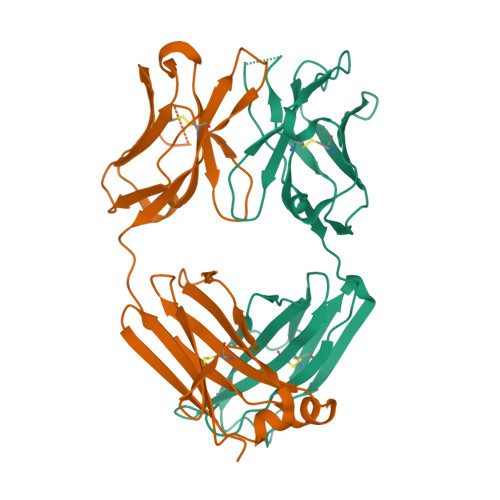Hierarchical sequence-affinity landscapes shape the evolution of breadth in an anti-influenza receptor binding site antibody.
Publication Type:
Journal ArticleSource:
Elife, Volume 12 (2023)Keywords:
Antibodies, Neutralizing, Antibodies, Viral, Binding Sites, Hemagglutinin Glycoproteins, Influenza Virus, Humans, Influenza, Human, Protein BindingAbstract:
<p>Broadly neutralizing antibodies (bnAbs) that neutralize diverse variants of a particular virus are of considerable therapeutic interest. Recent advances have enabled us to isolate and engineer these antibodies as therapeutics, but eliciting them through vaccination remains challenging, in part due to our limited understanding of how antibodies evolve breadth. Here, we analyze the landscape by which an anti-influenza receptor binding site (RBS) bnAb, CH65, evolved broad affinity to diverse H1 influenza strains. We do this by generating an antibody library of all possible evolutionary intermediates between the unmutated common ancestor (UCA) and the affinity-matured CH65 antibody and measure the affinity of each intermediate to three distinct H1 antigens. We find that affinity to each antigen requires a specific set of mutations - distributed across the variable light and heavy chains - that interact non-additively (i.e., epistatically). These sets of mutations form a hierarchical pattern across the antigens, with increasingly divergent antigens requiring additional epistatic mutations beyond those required to bind less divergent antigens. We investigate the underlying biochemical and structural basis for these hierarchical sets of epistatic mutations and find that epistasis between heavy chain mutations and a mutation in the light chain at the V-V interface is essential for binding a divergent H1. Collectively, this is the first work to comprehensively characterize epistasis between heavy and light chain mutations and shows that such interactions are both strong and widespread. Together with our previous study analyzing a different class of anti-influenza antibodies, our results implicate epistasis as a general feature of antibody sequence-affinity landscapes that can potentiate and constrain the evolution of breadth.</p>

